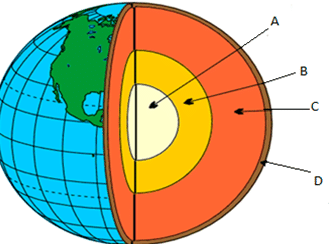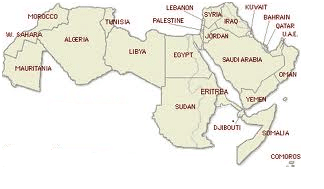Puntland State of Somalia
Ministry of Education
Puntland National Examination Board
Form 4 Geography Answers Sheet
June 2014
PART ONE: MULTIBLE CHOICE QUESTIONS – Circle the letter of the correct answer – 10 marks (each for 1 mark)
1-B,
2-C,
3-D,
4-A,
5-B,
6-C,
7-D,
8-A,
9-B,
10-C
PART TWO: STRUCTURED QUESTIONS – Answer all questions in this part in the space provided – 50 marks (each 5)
- Labeling diagram: 4 marks

-
- A. Inner core
- B. Outer core
- C. Mantle
- D. crust
2) (a) Urbanization: the growth of towns and urban centers – 1 marks
(b) Four factors that do not attract settlement (push factors) – 4 marks
-
- Insecurity
- Waterlogged land
- Areas with poor soils
- Insects and pests breeding ground
- Desert and non-fertile areas
- Huge forested areas
- etc
3. (b) Listing given words under Columns A and B respectively – 5 marks
| Metallic minerals A | Non- metallic B |
| Aluminum | diamond |
| copper | salr |
| silver |
4) (a) define the term “Environment”: All surrounding external conditions including organisms and objects – 1 marks
(b) Name any four environmental hazards – 4 marks
-
- Droughts
- Earthquakes and volcanoes
- Windstorms
- Lightning
- Floods
- Pollution
- Soil erosion
- Fires
- Oil spills
- Acid rain
- etc
5. capital cities for the following regions 5 marks
-
- a) Ayn: Buuhoodle
- b) Hayland: Dhahar
- c) Karkaar : Qardho
- d) Nugaal : Garowe
- e) Sanaag: Badhan
6. Carefully studying the map grid (1:1000,000) and answering the related questions 5marks
-
- a) Converting the map scale, ratio (1:1000, 000) into scale statement: 1cm to 10km
- b) The bearing of Armo from Bosaso as illustrated from the map 1350
- c) The direction of Bosaso from Armo as illustrated from the map of Somalia: South-East.
- d) If the distance between Bosaso and Armo is 10 cm (on straight line) on the map, measure the same area on the ground in kilometers: 100 Kilometers.
- e) In which politalical region Armo locates: Bari
7) (a) Define the term “Geography”: “Geography” is a combination of two Greek words, “geo” means earth and “grapho” which means to draw, describe or write about the earth. It can also be defined as a scientific study of earth as home of mankind. – 1 marks
(b) The two main parts of geography: – 2 marks
-
- Physical environment
- Human and economic geography
(c) Two significances of geography to man 2 marks
-
- Geography studies environment and its influences on human activities.
- It also studies the earth’s atmosphere, the surface, rocks in the earth’s crust.
- IT also Weather and climate affect on human activities.
- Temperature and rainfall are factors studied to understand why some people live in certain regions and grow certain crops and not others.
- Surface of earth is occupied by water bodies, rocks, soil, landforms and vegetation. they too, influence people’s activities.
- Near lakes and seas can stimulate people to engage in fishing and water transportation.
- Availability of water is normally a site of a settlement in an area
- Large water bodies may modify climatic conditions in nearby lands.
- We obtain water that may be trapped in rocks below the ground, for domestic, industrial or even for irrigation
- n. We extract valuable minerals and fossil fuels.
- Etc
8) (a) Differentiation between “land transport and water transport” – 2 marks
-
- (i) Land transport: Moving goods and people along the land surface
- (ii) Water transport: moving goods and people along the water surfaces.
(b) Three factors influencing the transportation – 3 marks
-
- The physical land forms
- Climatic conditions
- Government factors
- Distribution of goods and people in the area
- Capital investment
- Number of vehicles
- Quality of vehicles and drivers
- Stage of economic development of the country
- etc
9) (a) Define what is “agriculture”? : the science and art of growing crops and rearing livestock – 5 marks
(b) Factors that influence agriculture
-
- The climate
- Altitude and slope of land
- Soil factors
- Biotic factors
- Socio-cultural factors
- Human factors
- Economic factors, etc
10) Giving two causes for each of the following factors –
A) Reasons for why world countries are different in crop production 2 marks
-
- They are different in soils
- Different in capital investment
- The difference in socio-cultural food
- Difference in human resource
- Difference in technology power
- Different in landscape
- Etc
B) Reasons for food shortage in the Arab countries 2 marks
-
- The poor climate in some regions
- Backwardness in technological advances
- Most of them import food
- Most of them are busy with the production of oil
- Most of the communities are nomadic pastoralists
- etc
C) Reasons why more traffic accidents occur in Puntland 2 marks
-
- Dry weather road is the most common road
- Shortage of tarmac road
- More potholes and lack of maintenance
- More poor drivers
- Lack of law and order
- Gusting in rush times
- etc
PART THREE: Extended questions – 40 marks (each 10) Answer only four questions out of the following six questions (in the space provided)
1) (a) define the term “energy”: fuel or power needed to run a machine or to assist human in production – 1 mark
(b) List words in the box under Columns A and B respectively
| Renewable A | Non-renewable B |
| Solar | Coal |
| HEP | Petroleum |
| Uranium |
(c) Differentiation between the two type of energy – 4 marks
(i) Renewable energy is a source of power that can be produced or regenerated. They are inexhaustible
(ii) Non-renewable is a source of energy that cannot be reproduced or regenerated. They are exhaustible and can never be increased or replaced once used.
2) (a) Define the term “pollution”: contamination of land, water and making air harmful to human, animals or plant life. – 1 marks
(b) List these words under Columns A and B respectively – 5 marks
| Natural hazards A | Human-induced hazards B |
| Drought | Erosion |
| Diseases | Deforestation |
| Windstorms | |
(c) four significances of the environment to man – 4 marks
-
- We obtain our food from the environment
- Genetic resources and endangered species are maintained
- Forests are home for many animals and birds
- Environment provides water supply needed by animals and plants
- We extract some natural resources from the env.
- Etc
3) Define the terms “intensive and extensive agriculture? 2 marks
-
- Intensive farming: a type of farming where land is limited and farmer puts effort to produce as much crops as possible. It occurs almost near urban centers
- Extensive farming: a type of farming where land is large enough and farmers put their efforts to grow almost a single crop for sale.
(b) Differentiation between characteristics of intensive and extensive agriculture – 8 marks
| Intensive agriculture | Extensive agriculture |
| i. involves small farm land | a. involves large farm land |
| ii. yield per unit aera is high | b. yield per unit area is low |
| iii. use of large labour force | c. use of considerable machinery |
| iv. use of small machinery | d. use of small labour force |
| v. income per man is low | e. income per man is high |
4. (a) Two simple traditional methods used for catching fish 2 marks
-
- Use of traps
- Use spears
- Use bow and arrows
- Use of baskets
- Use scoops
- Use baited hooks
- Use of herbs and poison
- etc
(b) Four major fishing grounds of the world 4 marks
-
- North-eastern pacific
- North-western pacific
- North-eastern Atlantic
- North-western Atlantic
- Coastal Peru
(c) Discussing four factors that have promoted major world fishing grounds. 4 marks
-
- Wide and long continental shelf
- Meeting cold water and warm water
- Large amounts of minerals brought by rivers
- Large market provided by large population
- High indented coastline
- Advanced fishing technology eg fishing vessels
- Cold frozen and rugged inland not suitable for farming
5. (a) Define the term “Transportation” : moving goods and people from one place to another 1 marks
(b) Explain four benefits of road transport in Puntland 4 marks
-
- Used to transport export goods to the ports
- Used to transport import goods to the consumers inland
- Facilitates distribution of products entire local markets
- Joins produced good to local consumers
- Facilitates people to join local airports and port to travel abroad
- etc
(c) Five uses of mobile phones rather than transferring information 5 marks
-
- use calculators
- use games
- write and keep notes
- Record sounds
- Take photographs
- Use calendars
- Use time keeping
- etc
6) a) (i) When Somalia joined to the Arab League Countries? = 1974 – 1 marks
(ii) four Arab countries occur in North Africa – 4 marks
-
- Egypt
- Tunisia
- Libya
- Algeria
- Morocco
(b) (i) two important rivers rather than Nile that run through middle
east countries (sham):2 marks
-
- Tigris (dajla)
- Euphrates
- Gordan
- Dua
- etc
(ii) Discussing three features making Arabs occur an important strategic position 3 marks
-
- Occurrence of important canals like Suez Canal, Hormoz and Gibraltar.
- They join both east and west of the world
- Arab countries occurs on both Asia and Africa
- They occur at the center of the world
- Etc






Recent Comments